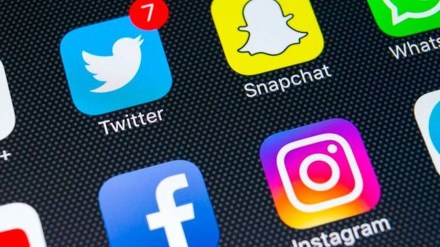By Prof Dheeraj Sharma
The last decade witnessed a surge in the use of smartphones and social media platforms, thanks to affordable data plans and a rapidly expanding internet infrastructure. Instagram, WhatsApp, Facebook, etc, have become virtual public spaces where the youth exchange thoughts, images and experiences. While they offer connectivity and a sense of belonging, they are also a contributor to the substantial increase in screen time.
But how exactly do we use the social media, and what can we learn from it?
To capture it, research was carried out by a team from the Indian Institute of Management, Rohtak, during October-November 2023. The data was collected from 32,896 individuals aged 18 to 25 years, and included 18,521 males and 14,375 females from various regions, socioeconomic backgrounds and cultural contexts.
Findings reveal that 60.66% use social media platforms, and there is a notable peak in engagement during evening hours. The average screen time of males is 6 hours and 45 minutes, and for females it is 7 hours and 5 minutes. YouTube, Instagram, WhatsApp and Safari/Google Chrome predominantly contribute to their screen time. There is also a shift from traditional calling to WhatsApp calling – the reason is the youth’s desire for privacy and control over communication, as WhatsApp provides end-to-end encryption.
Social media platforms serve as a canvas for digital self-expression, allowing youth to construct and curate their online identities. Here are insights into the social media preferences of the youth – Instagram is the most popular (preferred by 31.27%), followed by WhatsApp (28.32%), Snapchat (19.78%) and Facebook (17.20%).
In addition, a predominant proportion (54.52%) of viewership is dedicated to entertainment, followed by professional and self-help content (26.23%), education, knowledge and news (14.28%), and political content (4.97%).
Coming to OTT platforms, YouTube is the dominant force (preferred by 32.03%), followed by Netflix (20.25%), Hotstar (19.24%), Amazon Prime (18.78%) and Zee5 (9.69%). These figures underscore the profound impact of OTT platforms on the entertainment choices of the Indian youth, signalling a notable shift in social media behaviour towards active engagement with on-demand and personalised digital content.
While social media platforms offer connectivity and opportunities, a mindful approach is crucial to strike a balance between the benefits of the digital age and the preservation of mental well-being and societal harmony. The dawn of the digital era beckons for a collective effort to harness the positives while mitigating the potential pitfalls of excessive screen time among the nation’s youth. The above data suggests a high degree of involvement of the youth in social media platforms. Policymakers need to devise strategies so that the youth voluntarily restrict usage of social media and use them as aid for self-development.
(The author is director, IIM Rohtak. Views expressed are personal.)
